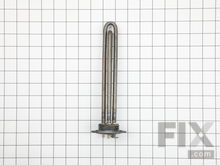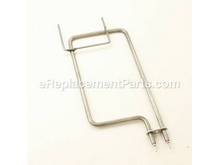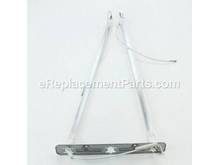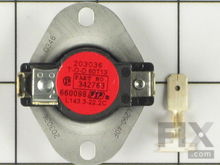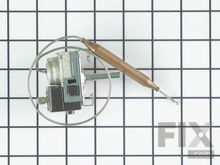How To Fix A Water Heater That Isn't Getting Hot
- Rated as EASY
- 15 repair stories
- 2 step by step videos
Heater Element
If your electric water heater isn’t getting hot, you may have a defective element. On most residential electric hot water heaters there will be both upper and lower heating elements. If you have no hot water at all, then the upper heating element would be the most probable cause. Not enough hot water would point to the lower heating element in most cases. The elements are easy to check using a multi-meter and do not have to be removed from the heater for testing. Turn off the power and then remove the two access covers on the side of the tank. Pull the insulation aside and locate the elements. Remove the two wires from each element and set the scale on the multi-meter to the R 1 setting. Measure between the two terminals and you should see between 10 and 20 ohms resistance for either element. There should be no continuity between the terminals and the body of the tank. If either of these tests fails, then the element is defective. You will have to drain the tank before replacing an element. Turn off the inlet water valve and connect a hose to the drain valve to expel the water. Open the drain valve and a hot water faucet until the water level is below the opening for the element. Use caution as the water will be very hot! Tip: before turning off the inlet valve and draining the tank open a hot water tap in the home and allow the hot water to run until it drops to a safe temperature. Use the proper size socket or an element wrench to remove the old element. Make sure that the gasket on the new element is intact and that you tighten the element securely. Reattach the wires to the terminals and then close the drain valve tightly and allow the tank to fill completely. Check for leaks before turning on the power.
Control Thermostat
If your water isn’t getting hot, you may have a defective thermostat. The temperature of your hot water is regulated by this adjustable thermostat which normally has a range between 90 and 150 degrees Fahrenheit. On most residential electric hot water heaters there will be an upper and a lower thermostat and they should both be adjusted to the same temperature. To determine which of the thermostats might be defective, turn off the power and then remove the two access covers on the side of the tank. Pull the insulation aside and check the upper thermostat reset button to see if it has been tripped and then ensure that both thermostats are adjusted to the same settings. If the water in the tank is colder than 90 degrees Fahrenheit you can use a multi-meter to check the thermostats for continuity. On the upper thermostat, check for continuity between the terminals L1 and T2. No continuity at less than 90 degrees would indicate a defective thermostat. On the bottom thermostat there are only two terminals and at less than 90 degrees there should be continuity between them. If either thermostat fails this test, they would need to be replaced. Disconnect the wires and lift up on the spring mounting bracket to remove the thermostat. Make sure that when installing the new thermostat that the mounting bracket maintains a firm contact between the thermostat and the tank. On gas-fired water heaters the temperature is controlled by the gas valve. The valve assembly will have a dial that will allow for temperature adjustment and will also have a probe that monitors the water temperature. If the pilot light is lit and adjusting the dial does not allow for the desired water temperature, then the valve assembly must be replaced. This repair should only be performed by a trained professional.
More Repair Parts
Still not sure which part is broken? We can offer you custom troubleshooting help if you search with your model number.





